The Drawing of the Dark and adding Wargaming back into Dungeons and Dragons
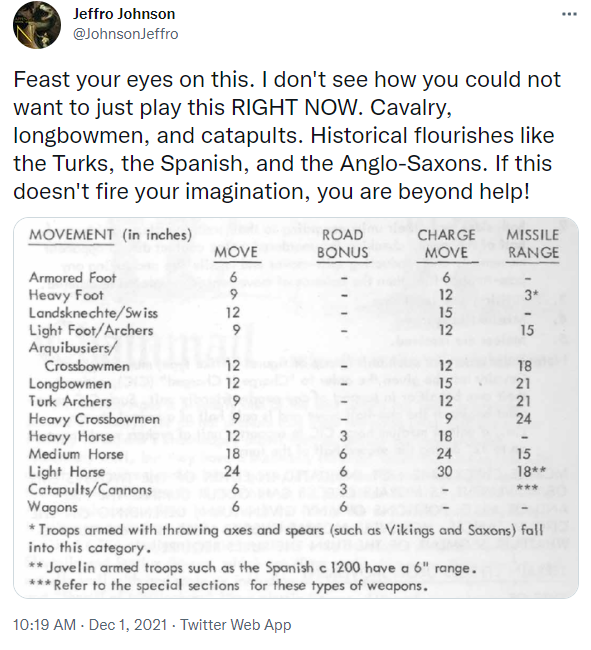
One of the most exciting things that has happened to Dungeons and Dragons recently is the re-appreciation of its roots in wargaming, in particular due to the excellent Secrets of Blackmoor movie that shows us not only Dave Arneson’s contribution to creating the most imaginative game that exists, but also what table play was like at the very beginning.
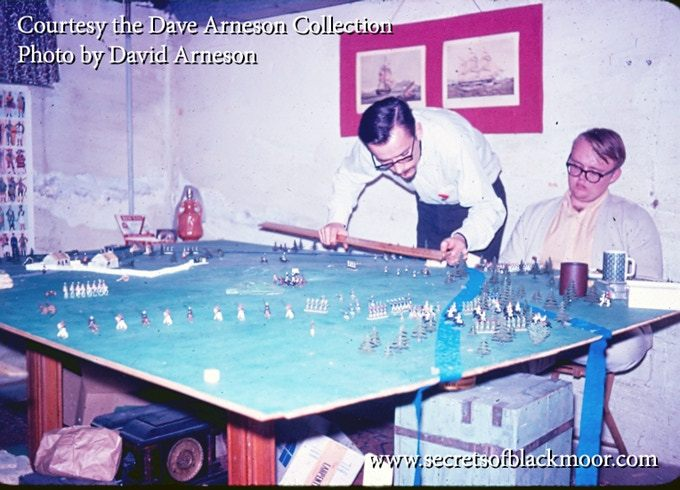
The Braunstein went like this:
- Have each player take on a significant role
- Referee talks to each player one at a time
- Players talk to each other while waiting!
- Use this to add background and color to a battle you have planned
- Playing the battle is optional!
As played at the beginning, and is played now in its most exciting form, D&D is a wargame of infinite scope and complete player autonomy. Anything can and does happen, at multiple different scales and evolving over time. Dungeons are looted, armies clash, alliances are formed and broken, plots abound. In the broader world of tabletop roleplaying games, there lots of different kinds of play, many of which are called “D&D”, but are quite different than this. I would argue that none of them have the special magic that enabled D&D to become the name of roleplaying the world over, but that is a discussion for another time.
What I am going to do here is look at how you can use adventurous and mythic fiction to form your imagination so that you can see the possibilities inherent in the kind of game that Gary and Dave pioneered.
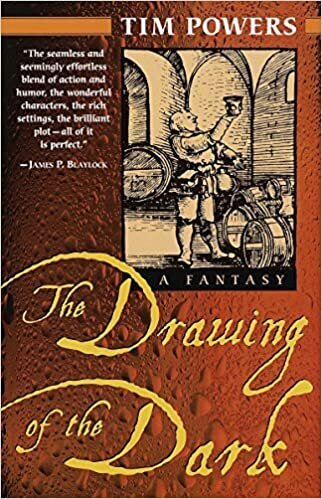
But there is danger of immediately taking the wrong lesson by looking to fiction, so let’s tackle that first.
If you look at the very first evolution of RPG play, it was towards "creating a satisfying narrative”. In a way, this is a natural, and understandable development when one of the purposes of D&D is to enable you to experience all the cool stories you love to read. But, it also destroys the key aspects of infinite scope, limiting what can happen to what advances the narrative, and undermining player autonomy, because players will not necessarily advance the narrative as planned if actually allowed to do what they want.
There is also an important commercial aspect of what happened as well, as this development was aided and abetted by the need of TSR and other RPG companies to sell product, and the selling of pre-packaged narratives turned out to be a way to make money, turning a hobby into a business.
So, no one needs a “Drawing of the Dark” module to play. What you need to do is appreciate how the action in the book zooms from one setting to another and one scale to another, and uses the flow of time to allow schemes and plots to flower before the decisive battle.
We begin in Venice, with a street brawl between a grizzled old landsknetchen and some sellswords. This is followed up by a narrow escape from unknown agents, and a journey on foot from Trieste to Vienna. This takes several weeks, which allows time for lots of things to happen in the background. This element, the natural passage of time, has been largely eliminated from RPG play, but it is absolutely necessary for this all to work.
If we look at this from the Braunstein + Chainmail perspective, then the flow of time follows naturally from the logistical and turn based structure of a miniatures combat game extended to the whole imaginary world. It takes time to assemble armies and march them around, so you cannot replicate a campaign without allowing significant amounts of time to pass, months or even years.
And this is exactly what is happening in the book, which is set during the 1529 Siege of Vienna by the Turks. Each faction is making alliance and moving armies, collecting intelligence and trying to coopt or eliminate key players on the other side. If we look at this in the terms of D&D play, at least two powerful factions, that could be lead by player Patrons, are getting setup for a big battle near a fortress.
Those same factions are attempting to recruit a powerful player, in the book Brian Duffy, to their sides, or failing that the evil aligned faction will settle for killing him. Now, here is where a mistake could be made: in the book, the wizard Aurelianus tricks Duffy into helping him. This is exactly the thing far too many DMs have been tempted to do over the years. A really cool set-piece battle is planned for Vienna, and you got to get the players to go there!
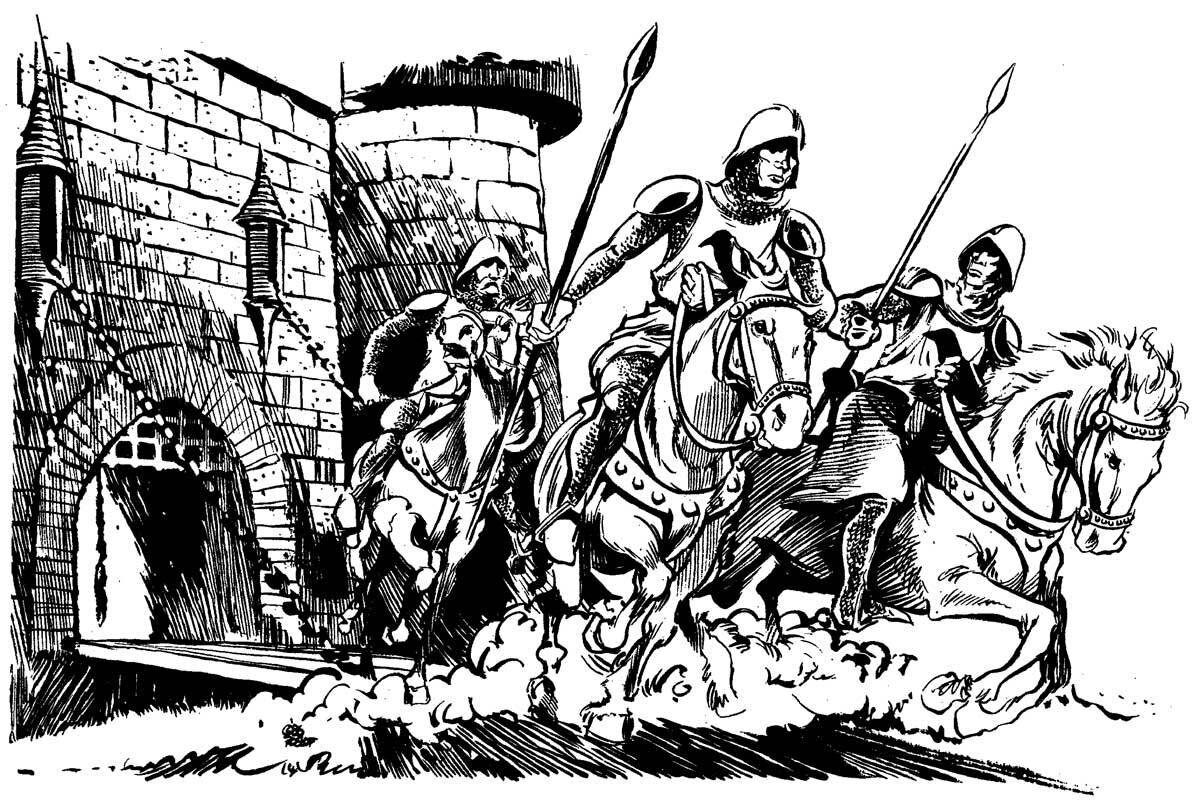
Knights of the realm sally forth (Jim Roslof, AD&D module N3: Destiny of Kings, TSR, 1986)
If we were playing D&D, to really get back to the style of play that makes the magic happen, the players need to make their own decisions about this. But, kind of like Brian Duffy, this setup is probably too interesting to ignore. But then again, maybe in this game world Vienna falls to the Turks and then you just see what happens after that.
But if the players do get involved, then you can see how the action in Vienna goes from a dungeon crawl [for purposes of making an alliance, not loot!] to small unit actions once the city is besieged, featuring the landsknechten, arquebusiers, Turks, and whatnot from the Chainmail tables. Then the final battle in the book is Brian Duffy leading a sally with an irregular unit of elderly Vikings that showed up looking for Sigmund [and found him!] along with the wizard who got him involved in all this to turn the tide of battle with magic.
The whole time that Brian Duffy was doing his thing in Vienna, plots were motion by all sides to bolster their own side and sabotage the other. Months go by as all this happens, largely out of sight, but still critical to how it all comes out in the end. There are even unaligned parties in play looking to take advantage of the chaos to get what they want.
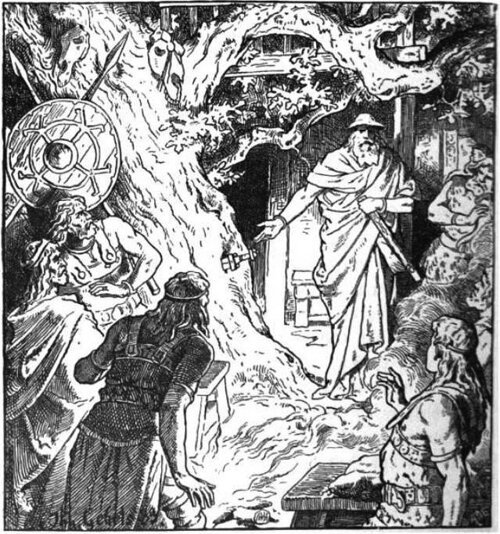
SIGMUND’S SWORD (1889) BY JOHANNES GEHRTS
BY EDUARD ADE - FELIX DAHN, THERESE DAHN, THERESE (VON DROSTE-HÜLSHOFF) DAHN, FRAU, THERESE VON DROSTE-HÜLSHOFF DAHN (1901). WALHALL: GERMANISCHE GÖTTER- UND HELDENSAGEN. FÜR ALT UND JUNG AM DEUTSCHEN HERD. BREITKOPF UND HÄRTEL., PUBLIC DOMAIN, HTTPS://COMMONS.WIKIMEDIA.ORG/W/INDEX.PHP?CURID=4625789
You could play all of the events that happen in the book using D&D along with Chainmail or another mass combat system, and allowing players to run factions in the world. That final sally is just the kind of crazy thing that players might come up with to break a siege, if you let them. But even better, you could have your own world full of wild and crazy and marvelous things that you get to fool around in with your friends. What could be better than that?
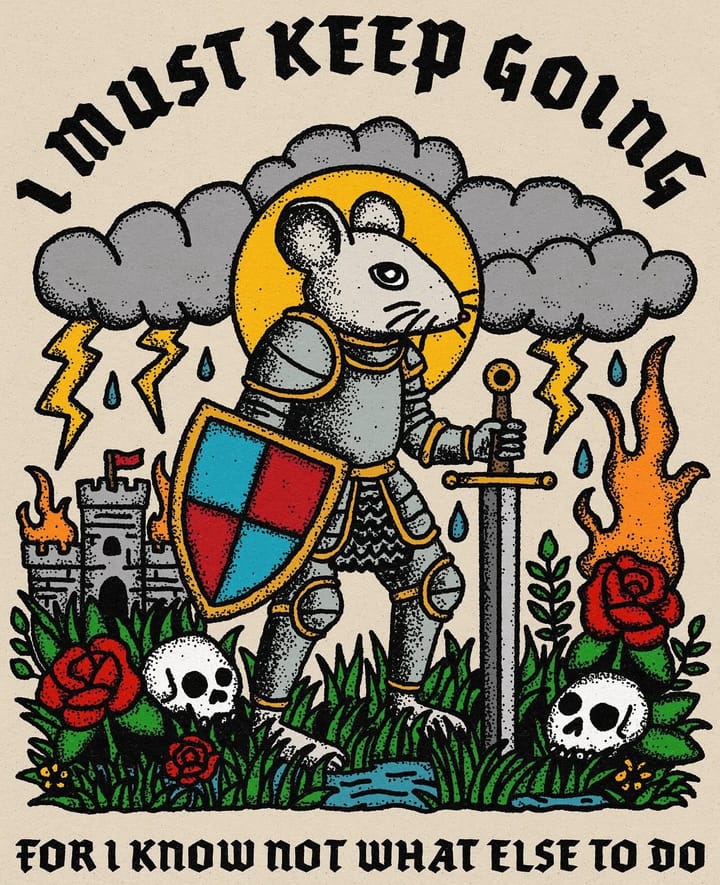


Comments ()